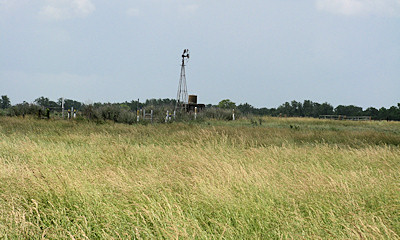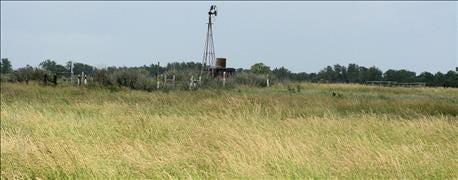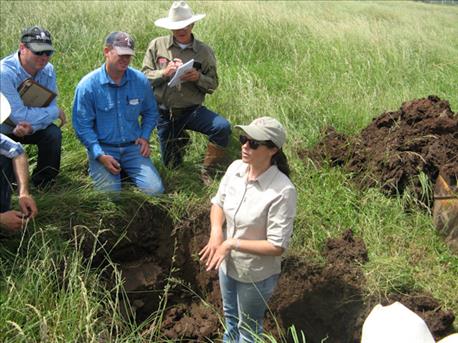March 16, 2016

Across the country beef producers are focusing on managing what’s under their feet – the soil and their populations of micro-organisms. Because producers realize that healthy soil is necessary for good forage production and ranch profitability, producers are seeking information through attendance at conferences and seminars and joining organizations that provide education on soil management.
Sources of information

BUILD A BASE: Healthy soil produces a healthy forage supply.
Two of the leading organizations promoting soil health are the National Grazing Lands Coalition and Holistic Management International. NGLC is a nationwide consortium of individuals and organizations created to provide technical assistance in maintaining and improving management and health of the nation’s grazing lands. NGLC seeks to conduct its activities through local, state and national partnerships. Currently there are approximately 23 state chapters within NGLC.
The mission of HMI is to educate people on managing land for a sustainable future. As a non-profit organization, they motivate, connect, support and train farmers, ranchers, and land stewards on a whole farm/ranch planning system that addresses and improves environmental health, sustains economic viability, and enhances the quality of life in farm and ranch communities.

TELLING THE STORY: The Locke Division of J.D. Hugins Inc. hosted a two-day soils seminar at Wharton, Texas with Nicole Masters, Integrity Soils, New Zealand as the instructor.
An individual crusader for soil health in Texas is Joey Jones, who currently owns and operates a family run business consulting firm. Jones consults with small to medium sized family owned ranches as well as a number of other industries. Last year Jones organized and hosted a two-day “Restore the Land Conference” that featured presentations from scientists and industry experts from across the United States. A presentation focused on soil health was delivered by Doug Peterson, Regional Soil Health Specialist, UDSA-NRCS based in Missouri. Peterson’s topic was “The Building Blocks of Pasture Soil Health”.
What we are learning
Peterson defined healthy soil as having a stable surface and a amicrobial population that efficiently decomposes organic residues. Organic matter is increasing in a healthy soil or it is at the maximum level for that location. Healthy soil does not contain phosphorus, nitrogen, or pesticides in sufficient quantities to cause water quality problems in the event of an unexpected erosion episode. A soil is healthy when it is regenerative under its intended land use or management system.
“Health of soil is important because it performs three vital functions,” explains Peterson. “It regulates water by controlling whether rain, snowmelt and irrigation flow over land or into and through the soil. Minerals and microbes in soil are responsible for filtering, buffering, degrading, immobilizing and detoxifying organic and inorganic materials, including industrial and municipal by-products and atmospheric deposits. Carbon, nitrogen, phosphorus and many other nutrients are stored, transformed and cycled in the soil.”
“Ranching in the 21st century is providing a practical approach to soil health,” Peterson says. “Ranchers are learning to manage more production by minimizing soil disturbance. There are two types of soil disturbance – physical and chemical. Continuous grazing is a physical disturbance that can cause bare soil which increases moisture evaporation. Bare soil can also reduce plant diversity and is avoided by using a management strategy that lengthens rest periods on pastures which results in less grazing events per year. Rest periods can be extended while maintaining the same stocking rate by concentrating cattle on an area for a short period which encourages the animals to graze every plant. Chemical soil disturbances are caused by excessive or repeated applications of pesticides, inorganic fertilizers, and manures.”
Producers are also learning to feed soil livestock (micro-organisms) with living roots all year long. Micro-organism diversity is critical for soil health and is accomplished by keeping soil covered with a diversity of plants including cool and warm season grasses as well as cool and warm season broadleaf plants. Grazing and rest period durations determine range or pasture species composition. Pastures should be managed to imitate the plant diversity of native prairie.
Soil health improvement can result in more and better quality forage, increased animal production, reduction in feed expense, and a more profitable operation.
Additional information can be obtained from the following websites: grazinglands.org, holisticmanagement.org, grassfednewtork.com. And don't forget the wide range of resources available at your local Natural Resources Conservation Service Office.
Manage the underground livestock herd ->>>
~~~PAGE_BREAK_HERE~~~
Maintain underground livestock herd
When managing soil health for long-term it might be good to be familiar with the rest of the herd, here's a rundown of just what's down there:
Bacteria – Feed on soil organisms, decompose organic matter, help keep nutrients in the root zone, enhance soil structure, compete with disease-causing organisms, and filter and degrade soil pollutants.
Fungi – Decompose complex carbon compounds, improve accumulation of organic matter, retain nutrients in soil, bind soil particles into aggregates, compete with plant pathogens, and decompose certain types of pollutants.
Protozoa – Eat bacteria, prevent some pathogens from establishing on plants, and function as a food source for nematodes.
Nematodes – Distribute bacteria and fungi through the soil. Predatory nematodes can consume root-feeding nematodes or prevent their access to roots.
Arthropods (insects, spiders and mites) – Create soil structure through burrowing, deposit fecal pellets, control disease-causing organisms, stimulate microbial activity and shred organic matter.
Earthworms – Digest micro-organisms and organic matter.
Source: Colorado State University Extension
Organic matter and soil - >>>
~~~PAGE_BREAK_HERE~~~
Key facts about organic matter and soil
The amount of organic matter determines soil health in range and pastures
What follows is a checklist from USDA-NRCS that explores the impacts of soil health.
1. Practices that enhance soil organic matter
• Vegetative cover on soil year-round
• Rotation or prescribed grazing
2. Organic matter dynamics
• Increased surface residue forms a physical barrier to wind and water erosion.
• Higher residue rotations and cover crops contribute more organic matter and nutrients to the soil.
• Less soil disturbance means lower organic matter losses.
3. Soil property changes
• Surface becomes more stable and less prone to crusting and erosion.
• Water infiltration increases and runoff decreases when soil structure improves.
• Soil organic matter holds 10 to 1,000 times more water and nutrients than the same amount of soil minerals.
• Beneficial soil organisms become more numerous and active with diverse plant populations and higher organic matter levels.
4 Air and water quality and plant production improvement
• Dust, allergens and pathogens in the air decline.
• Sediment and nutrient loads decline in surface water as soon as soil aggregation increases and runoff decreases.
• Ground and surface water quality improve because better structure, infiltration, and biological activity make soil a more effective filter.
• Vegetation is better able to withstand drought when infiltration and water holding capacity increase.
• Organic matter may bind pesticides, making them less active. Soils managed for organic matter may suppress disease organisms, which could reduce pesticide needs.
• Plant health and vigor increase when soil biological activity and diversity increase.
• Wildlife habitat improves when residue management improves.
Source: USDA-NRCS
You May Also Like




